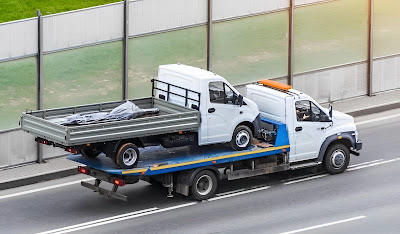What to Do if Your Car Battery is Dead in Nowhere?
It can be dreaded when you turn the key and your car won’t start.
Or
You’re driving along a remote, winding road, surrounded by nature’s beauty, and suddenly, your car stops.
It’s frustrating and inconvenient, especially in the middle of nowhere. It’s a scenario that every driver dreads — a dead car battery in the middle of nowhere. This can be stressful and inconvenient, but you can take steps to handle it effectively.
While car battery replacement can be a solution, let’s explore what to do when you find yourself in this predicament:

1. Assess the Situation
When you realize your car’s battery is dead in a remote location, the first step is to stay calm and assess the situation. Find if there are any immediate safety concerns, such as being on a busy road. If it’s unsafe to keep in your car, exit it and find a safe spot away from traffic. Your safety is paramount.
2. Identify the Cause
Next, try to identify the cause of your dead battery. Was there any unusual behavior in your vehicle before it died? Did you accidentally leave the lights on, or is it a sign of a more serious issue? It’s essential to rule out any simple, fixable problems before taking more drastic measures. If you left your lights on, jump-starting your car may be all you need.
3. Try a Jump Start
You can attempt a jump start if you suspect a dead battery due to leaving the lights on or a temporary drain. You’ll need another vehicle with a functioning battery and jumper cables. Park the working vehicle close to your car, but should not be touching.
Join the positive (red) jumper cable to the positive terminal of your drained battery and the other end to the positive terminal of the working battery. Then, connect the negative (black) cable to the working battery’s negative terminal and the other end to an unpainted metal surface on your vehicle, away from the battery.
Start the working vehicle and let it run for a few minutes to charge your dead battery. Then, try to start your car. Let it run for a while to recharge the battery if it starts. If it doesn’t start, it may be a sign of a more significant issue, and you should consider seeking professional help.
4. Contact Roadside Assistance
If a jump start doesn’t work or if you’re unsure about performing one, it’s time to call for roadside assistance. Most auto insurance policies include this service, and there are also third-party companies that provide roadside assistance. When calling for help, provide your exact location, vehicle description, and any information about the issue. They can dispatch a professional to diagnose the problem and, if necessary, provide a car battery replacement.
5. Stay Safe While Waiting
While waiting for help to reach you, ensure your safety. Stay inside your vehicle with locked doors, especially in a remote or unfamiliar area. If you must leave your car, be cautious and aware of your surroundings. Have an emergency kit in your car that includes essentials like water, non-perishable snacks, a flashlight, and a blanket.
6. Be Prepared with Essential Tools
Carrying essential tools in your vehicle can be a lifesaver if your car battery dies nowhere. These tools include jumper cables, a portable jump starter, a tire pressure gauge, an essential tool kit, and a flashlight. A portable jump starter, in particular, can be a game-changer, as it eliminates the need for another vehicle when jump-starting your car. It’s a compact and powerful tool that can get you back on the road without depending on the assistance of strangers.
7. Preventative Measures
Taking preventative measures is essential to avoid finding yourself in a stranded situation. Regularly inspect your battery for signs of erosion or damage, and clean the terminals if necessary. Ensure your lights, radio, and other electrical components are turned off when the vehicle is not running. Additionally, make it a habit to have your vehicle’s battery and electrical system checked during routine maintenance.
8. Consider a Car Battery Replacement
If your car battery is old and dies frequently, it may be time for a replacement — car batteries usually last between 3 and 5 years, varying based on climate and driving conditions. Consider getting a professional inspection of your battery’s condition and performance to determine if it needs replacement. Replacing your battery before it completely fails can prevent being stranded in the middle of nowhere in the future.
9. Be Mindful of Your Surroundings
While waiting for assistance, being mindful of your surroundings is essential. Depending on where you are, wildlife or other environmental factors could pose a threat. Stay inside your vehicle, lock the doors, and remain vigilant. If you have pets or passengers with you, make sure they are safe and comfortable as well.
10. Stay Informed, and be Patient
When your car battery dies in between, staying informed and patient is crucial. Keep your phone charged and stay in contact with the roadside assistance provider. They will give you an estimated time of arrival so you know when to expect help. Additionally, if you’re in a remote area, be prepared for a longer wait time and try to make the most of the situation by enjoying the natural surroundings or reading a book.
Conclusion
A dead car battery in the middle of nowhere can be a stressful experience, but with the right approach, it doesn’t have to turn into a disaster. Remember, a well-maintained vehicle and a proactive approach can significantly reduce the possibility of finding yourself stranded in the first place. Whether you need a simple jump-start, a car battery replacement, or just some patience and a positive attitude, you can overcome the challenge of a dead car battery and continue your journey.
Source: https://medium.com/@tictoctow/what-to-do-if-your-car-battery-is-dead-in-nowhere-0764c158326f

Comments
Post a Comment